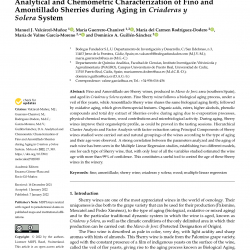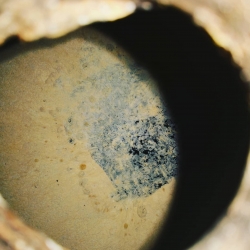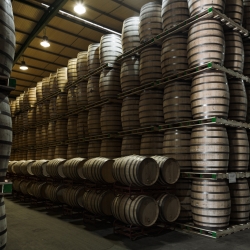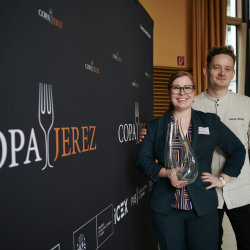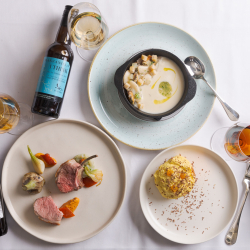A Visit to Bodegas Ximénez-Spinola

For centuries the Spanish family Zarzana has owned vineyards of pedro ximenez grapes near Jerez de la Frontera. Vineyards planted with this grape only cover 2 to 3% of the planted surface in the sherry area. Currently, the Zarzana family owns 22 hectares, which lie in and around Las Tablas, a hamlet between Sanlucar de Barrameda and Jerez de la Frontera. The winery has never ventured to work with palomino fino, the grape variety used to make the famous styles Fino and Amontillado. Over the centuries, the family has made sweet PX from pedro ximenez and also vinegar and brandy. Nice detail for Dutch readers: they started to make brandy at the request of wine merchants in Rotterdam. The sales ledgers of the house go back to 1729, when a shipment of PX was delivered in Veracruz, Mexico.
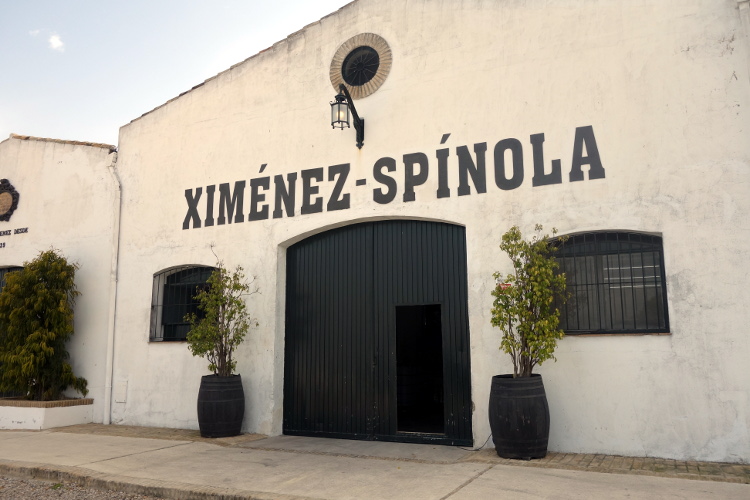
The grape from Pieter Cemeynes
The company is currently headed by José Antonio Zarzana. Together with his father, Don José Luis Zarzana Palma, Zarzana junior is very interested in the history of his house, but especially in the history of the grape variety pedro ximenez. There are many stories about this in the literature. One of these stories traces the grape variety to a provenance from the Rhineland and a relationship with riesling. Pedro ximenez could be a corruption of a Dutchman name Pieter Symonsz., Peter Siemens or something like that, who might have brought the grape with him to Spain. This historical context was an important reason for me to visit this winery, Bodegas Ximénez-Spínola.
During my research in recent years, I discovered that wines from the pedro ximenez grape have been imported into The Netherlands since 1609. Don José Luis has made it his life's work to trace the origin of the grape; he was therefore very emotional when I showed him the earliest mention of PX in a Dutch source I have been able to find sofar. We had extensive conversations about the origin of the grape during our visit, which I keep for a later article.
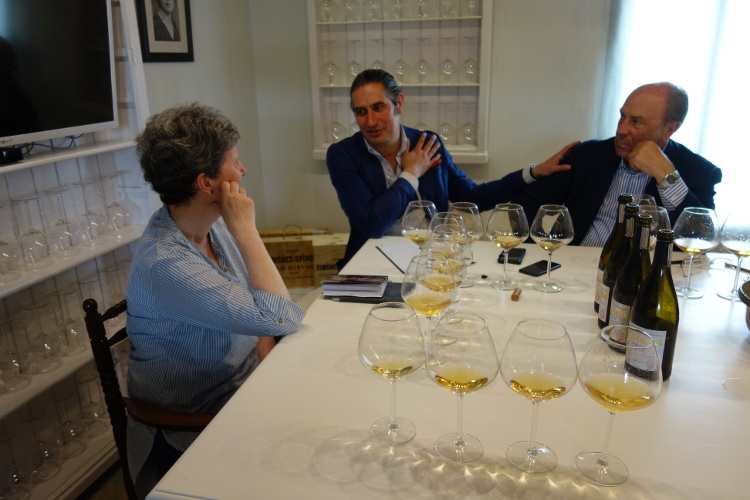
Adapted to the climate
Bodegas Ximénez-Spínola does not only research the grape in historical documents. Father and son have experimented with pedro ximenez for a number of years, to investigate the character of the grape variety and compare it with other European varieties. Although modern DNA research has undermined the theory that pedro ximenez is related to riesling, there may be another grape variety from Germany or from the Rhineland that could be the origin of the grape. Elbling maybe? This grape variety could then have adapted to the local climate due to the exceptional and extreme circumstances in Andalusia. José Antonio Zarzana wrote a fascinating blog post about it.
Because in sweet, fortified pedro ximenez the grape character cannot be tasted, the company has started making non-fortified dry wines. In addition, a part of each vintage is stored, to be able to taste after some years of maturing; the idea is to investigate whether the wine starts to show any resemblances to, for example, Riesling or Elbling.
During our visit we tasted an impressive number of wines. The first series, Exceptional Harvest, consisted of semi-sweet wines with residual sugar of 23 to 30 grams per liter. The finest of these was the oldest: a wine from 2011 that had a character that certainly resembled Riesling. The wine also reminded me of mature Welschriesling (could not that be the kinship?). Nutty, with hints of licorice and curry. The 2013 displayed notes of honey and ripe fruit, the 2015 some goût de petrol. In the 2016, I personally found the residual sugar a little too overbearing. The grapes for these wines stay on the vines for a long time; after harvest, the wines are made with one month skin contact and stay on the lees for four months, in barrels of American oak. During that time, batonnage takes place. The contact with the lees is of great importance: otherwise the wine would spoil too quickly in the hot climate of southern Spain. Because these wines are not fortified and do not come from a solera, they cannot be labeled as 'sherry'. Since 2014, therefore, a special designation has been created for Bodegas Ximénez-Spínola: Vino Varietal Pedro Ximenez.
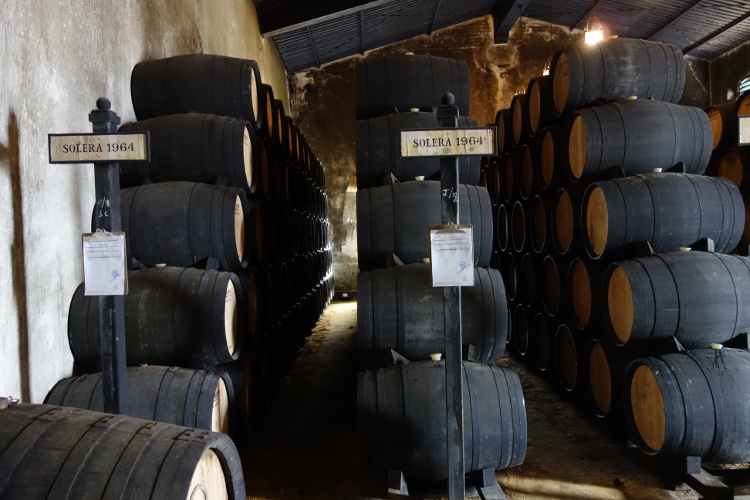
Slow fermentation
Even more exciting than the Exceptional Harvest wines were the wines in the Fermentación Lenta series. We tasted different vintages and were very impressed. These wines are completely dry and are made in barrels of 300 liters. The fermentation process is slow and complex; only 30 liters of wine can be made per day. The yeasts do not have more power to handle the process and to convert the sugars into alcohol. Every day, 30 liters are poured into the already existing fermented must, to create this intriguing and delicious wine very slowly. The 2014 reminded us of a Rkatsiteli from a Georgian qvevri: dry, nutty, very difficult to describe. Zarzana junior compared the wine to a Savagnin from the Jura, with which we could certainly agree. The 2015 still had a lot of fruit in nose and mouth, and in my opinion was the most exciting of the three vintages tasted. In the 2016, the process turned out to have been somewhat different. One of the 26 barrels had developed a flor blanket, which is rare at Ximénez-Spínola; they are not fond of it either. However, they decided to mix the barrel with the other 25, which gave a totally different wine than the previous year: the flor suppressed almost all the fruit character in the final wine! People who like the 2015 will therefore be very surprised if they taste the 2016 of this series. José Antonio Zarzana asked us what style he thought we should continue: we are going for the fruity 2015! Fortunately, he agreed to that himself.
Old Harvest
Our visit was not yet finished: we still had to taste the Old Harvest. What a wine! Not fortified and still 17% alcohol, made from dried grapes, just like PX. But this time in the oxidative way, in a solera started in 1964, with a bit of sweet wine added from a solera from 1918. This wine may therefore be labeled as sherry! A Pedro Ximenez to bow to with respect, with fine acidity and a great balance. Is it dry or sweet? It actually does not matter: this is a wine to really enjoy in small amounts, on its own or with some nice (goat) cheese.
After four and a half hours of talking and tasting, we drove back to Seville, very impressed with our experiences. What a great winery, what a story, what a warm welcome. We cherish the memories and will definitely visit again. And in the meantime, I promised to dig into the books! That mysterious Pieter Symonsz. must really come to the light someday ...
The views and opinions expressed in this article are those of the authors and do not necessarily represent those of El Consejo Regulador.


01 October 2018


